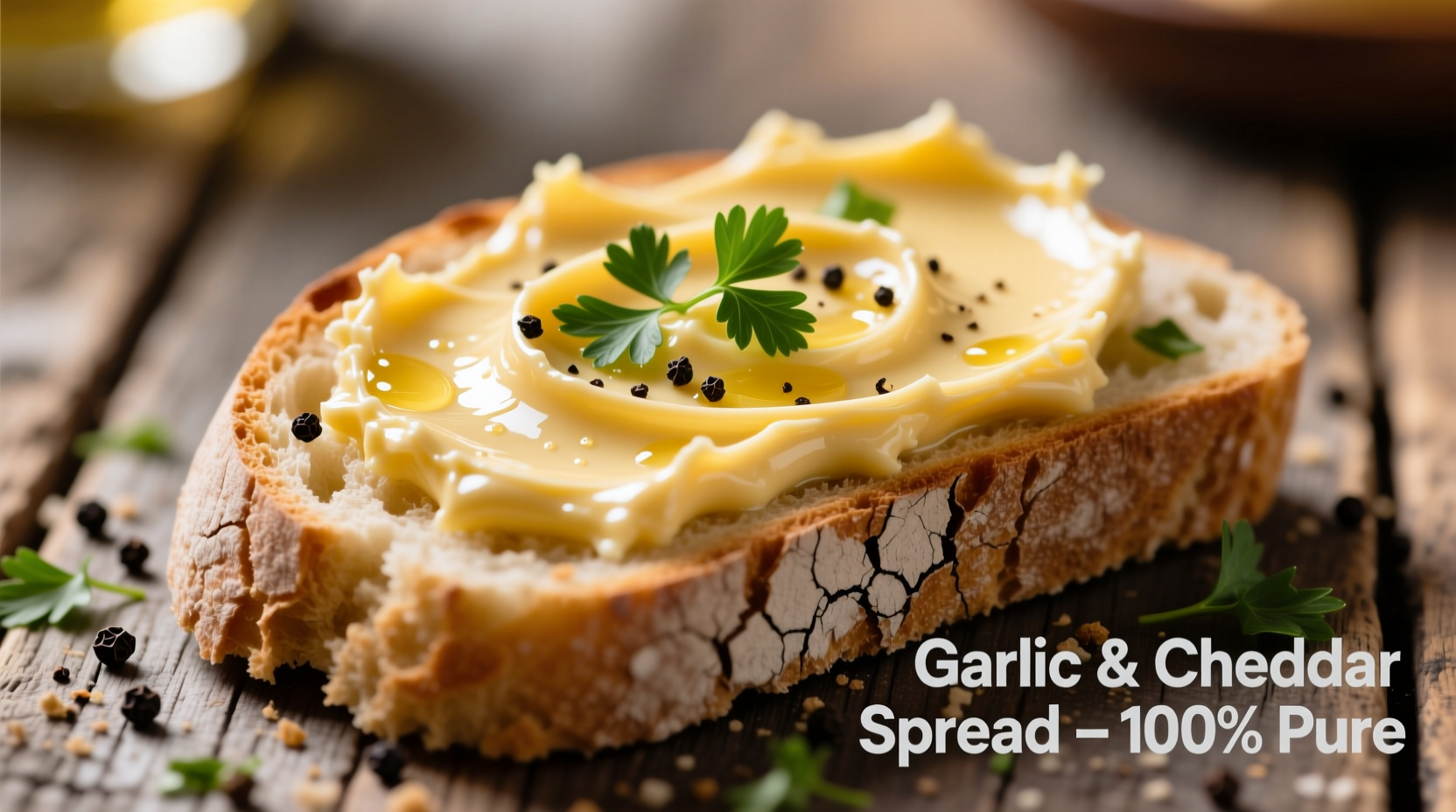Discover how to create restaurant-quality cheese and garlic spread at home with this comprehensive guide. Whether you're preparing for a party, elevating everyday sandwiches, or seeking a reliable appetizer, this article delivers professional techniques that transform basic ingredients into an exceptional spread. You'll learn the science behind flavor development, proper garlic preparation to avoid bitterness, and storage methods that maintain freshness.
The Essential Components of Great Cheese and Garlic Spread
Creating exceptional cheese and garlic spread starts with understanding its fundamental elements. Unlike store-bought versions that often contain stabilizers and artificial flavors, homemade spread relies on ingredient quality and proper technique. The magic happens when fresh garlic compounds interact with cheese fats, creating complex flavor profiles that develop over time.
According to the U.S. Food and Drug Administration, proper handling of dairy products prevents foodborne illness. When preparing cheese spreads, maintain temperatures below 40°F (4°C) until ready to serve, and never leave homemade spreads at room temperature for more than two hours.
| Ingredient | Recommended Amount | Flavor Impact |
|---|---|---|
| Fresh garlic (minced) | 1-2 cloves per 8oz cheese | Raw: sharp, pungent Cooked: mellow, sweet |
| Cream cheese (full fat) | 8 ounces | Provides creamy base, neutral flavor |
| Sharp cheddar (grated) | 4 ounces | Adds complexity and tang |
| Fresh herbs | 1-2 tablespoons | Enhances aroma, adds freshness |
Why Fresh Garlic Makes All the Difference
Many home cooks make the critical mistake of using garlic powder or pre-minced garlic from jars. Food science research from USDA Agricultural Research Service shows that fresh garlic contains allicin, a compound responsible for its characteristic flavor and health benefits, which degrades significantly in processed forms.
To maximize flavor while minimizing harshness:
- Let minced garlic rest for 10 minutes before mixing with cheese
- For milder flavor, blanch garlic cloves in boiling water for 30 seconds
- Avoid overheating garlic, which creates bitter compounds

Step-by-Step Preparation Guide
Follow this professional technique for perfectly balanced cheese and garlic spread:
- Prepare the garlic: Mince 1-2 fresh garlic cloves finely. For stronger flavor, leave raw; for milder taste, sauté gently in 1 tsp olive oil until fragrant but not browned.
- Softening cheese: Bring cream cheese to room temperature (about 30 minutes). Cold cheese creates lumps that won't blend smoothly.
- Combine ingredients: In a mixing bowl, combine 8oz cream cheese, 4oz grated sharp cheddar, prepared garlic, 2 tbsp fresh parsley, 1/4 tsp black pepper, and 1/8 tsp cayenne (optional).
- Mix properly: Use a hand mixer on low speed for 30 seconds, then fold by hand to maintain texture. Overmixing makes the spread greasy.
- Resting period: Cover and refrigerate for at least 2 hours (preferably overnight) to allow flavors to meld.
Common Mistakes to Avoid
Even experienced cooks encounter issues with cheese and garlic spread. Understanding these pitfalls ensures consistent results:
- Using pre-grated cheese: Contains anti-caking agents that prevent smooth melting. Always grate your own cheese from blocks.
- Incorrect garlic ratio: Too little lacks impact; too much overwhelms. Start with 1 clove per 8oz cheese and adjust to taste.
- Skipping the resting period: Freshly made spread tastes harsh. The 2-hour minimum rest allows garlic compounds to mellow.
- Poor temperature control: Serving straight from refrigerator makes spread hard to spread. Remove 15 minutes before serving.
Variations for Every Occasion
Adapt this basic recipe to suit different occasions and dietary needs:
- Herb-infused: Add 1 tbsp each of fresh thyme, rosemary, and chives for an elegant party spread
- Spicy version: Mix in 1/4 cup roasted red peppers and 1/2 tsp smoked paprika
- Lighter option: Substitute half the cream cheese with Greek yogurt (reduces calories by 30%)
- Dairy-free alternative: Use cashew cream base with nutritional yeast for cheesy flavor
Storage Guidelines for Maximum Freshness
Proper storage extends your spread's shelf life while maintaining quality. The USDA Economic Research Service confirms that properly stored homemade cheese spreads remain safe for 7-10 days in the refrigerator.
Follow these storage best practices:
- Always use airtight containers to prevent moisture loss and odor absorption
- Press plastic wrap directly onto the spread's surface before sealing container
- Store at consistent refrigerator temperature (below 40°F/4°C)
- Use clean utensils each time to prevent bacterial contamination
- Freezing is not recommended as it alters texture significantly
Serving Suggestions That Impress
Elevate your cheese and garlic spread beyond basic crackers with these professional pairing ideas:
- Appetizer presentation: Serve in a hollowed bread bowl surrounded by vegetable crudités and pita chips
- Sandwich enhancement: Spread on paninis or grilled cheese for added flavor dimension
- Pasta integration: Thin with pasta water to create instant creamy sauce
- Vegetable dip: Pair with roasted asparagus, artichoke hearts, or cherry tomatoes
- Burger upgrade: Use instead of mayo on turkey or veggie burgers
Troubleshooting Common Issues
Resolve these frequent problems with professional solutions:
- Too runny: Mix in additional grated cheese 1 tablespoon at a time until desired consistency
- Too thick: Add milk or cream one teaspoon at a time while mixing
- Garlic too strong: Balance with 1/2 tsp lemon juice or 1 tsp honey
- Separation: Chill mixture, then re-blend on low speed with 1 tsp cold water
- Lacking depth: Add 1/4 tsp onion powder or 1 tsp Worcestershire sauce











 浙公网安备
33010002000092号
浙公网安备
33010002000092号 浙B2-20120091-4
浙B2-20120091-4